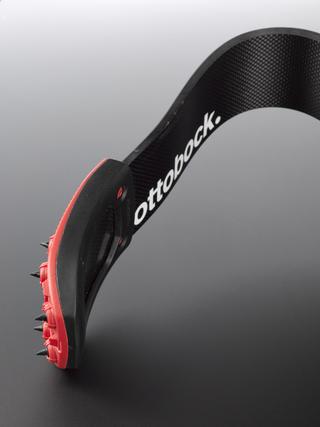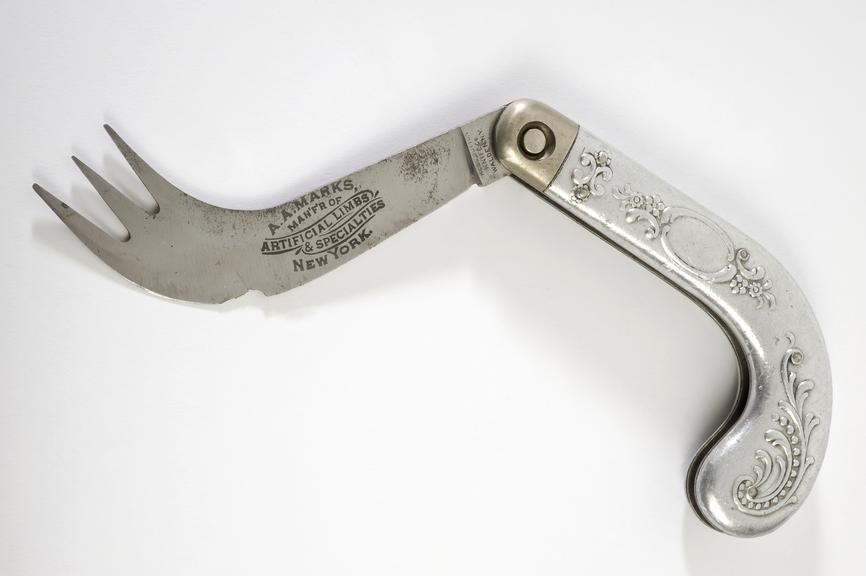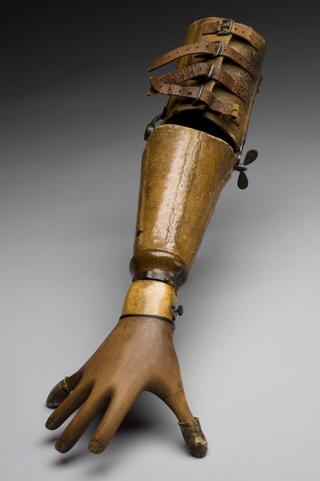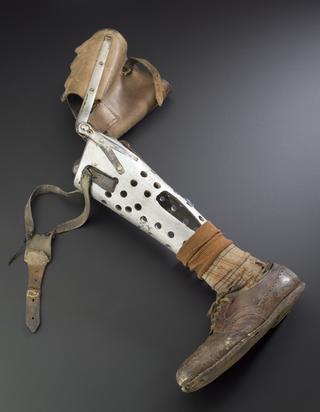
Spring operated 'Nelson' knife, New York, United States, 1845-1855
- Made:
- 1845-1855 in New York county
- maker:
- A A Marks Company




Spring-operated "Nelson" knife. Made by A.A. Marks c.1850.
Eating a meal when you have lost an arm can be difficult. To help overcome the difficulties involved, this device – known as a Nelson knife – combines the knife and fork into one tool. It was named after Horatio Nelson (1758-1805), the British naval hero who lost his arm on 1 August 1798 during the Battle of the Nile. Knives of this type were regularly made available to disabled veterans and the design is still on offer today.
Made by A A Marks, an American artificial limb maker, this example is released from its ornate case on a spring mechanism – not unlike a flick knife.
Details
- Category:
- Orthopaedics
- Object Number:
- 1999-624
- Materials:
- metal
- Measurements:
-
overall: 10 mm x 125 mm x 74 mm, .12kg
- type:
- knife
- credit:
- Richmond Twickenham and Roehampton Healthcare NHS Trust




